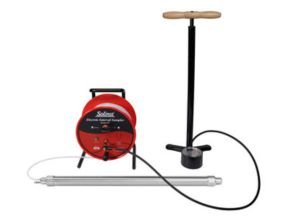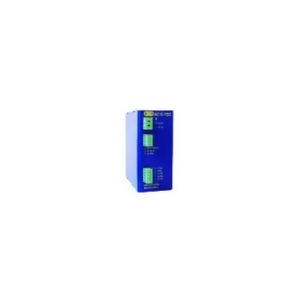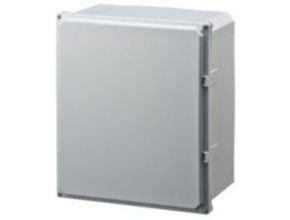General Information
The NEW 425-D Deep Sampling Discrete Interval Sampler can sample from submerged depths as much as 1200 m (4000 ft). The stainless steel sampler connects to the same convenient tubing reel as the standard 425. Operation follows the basic principles of hydraulics. The sealed sampler is pressurized at depth allowing water to enter. The sampler is vented and sealed before retrieval to surface, maintaining sample integrity.
About of Solinst Model 425 Discrete Interval Groundwater Samplers
The Solinst Model 425 Discrete Interval Sampler (DIS) is a stainless steel sampler, with LDPE tubing mounted on a convenient Solinst reel. The reel has a pressure attachment for a high pressure hand pump, and a pressure/vent switch which is used to apply and release the pressure on the sampler. A sample release device is included with each standard Discrete Interval Sampler.

Solinst also offers the Model 425-D Deep Sampling Discrete Interval Sampler for obtaining samples from submerged depths as much as 1200 m (4000 ft). Biodegradable disposable PVC bailers and stainless steel Point Source Bailers are also available from Solinst.
Discrete Interval No-Purge Sampling
Discrete interval sampling is ideal for obtaining truly representative water samples and for obtaining samples of product (LNAPL and DNAPL). The DIS is ideal for groundwater sampling from below an oil/product layer on the surface of the water, as it allows a sample to be obtained which is untouched by the oil.
Discrete Interval Sampling is also used to profile open bodies of water, open boreholes and screened wells, and to collect samples from distinct levels or points of inflow. Mixing of water from different levels in the well is minimized.
The Model 425 Discrete Interval Samplers are also recognized as a no-purge sampler. No-purge, also known as zero-purge or passive sampling methods, have gained acceptance by many regulatory agencies worldwide for obtaining high quality groundwater samples.
These sampling methods are based on the principle that groundwater which flows into a well, maintains equilibrium with the adjacent water bearing unit. Sampling at the discrete interval should result in representative samples, without the need for purging.
Source: www.solinst.com
Read More:
- Sumitomo COMPOWER Gear Reducers
- Donxion Industrial Components
- Mercer International Oil Water Separators
- Philmac Valves and Fittings
- Philadelphia Scientific Industrial Battery Industry




